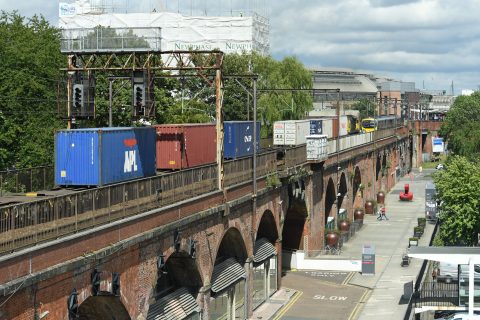
TransPennine Route Upgrade critical for North of England rail freight
It may have been rescoped, but the TransPennine Route Upgrade (TRU) remains at the heart of ambitions for Transport for the North. At its latest meeting, the body charged with transforming the infrastructure in the north of England reiterated its commitment to making the rail route the artery of the north. The TRU program aims to revolutionise travel across the North by delivering major upgrades along the 70-mile route connecting Manchester and York.
The Transport for the North (TfN) Board convened in Manchester last week and celebrated the significant progress made on the TransPennine Route Upgrade program. This ambitious initiative represents a multibillion-pound investment in railway improvements. Although the programme has been sliced and diced by administrators keen to balance changing budgets, the programme remains a huge initiative, and freight figures in the final outcome.
Insufficient connectivity and unreliable infrastructure
Levelling Up is an initiative promoted by the UK government to redress the economic imbalance between the booming south and the underperforming north. Addressing one of the key challenges faced by the North of England, and answering the Levelling Up agenda, the TransPennine Route Upgrade program seeks to rectify decades of underinvestment in the region’s transport network. Insufficient connectivity and unreliable infrastructure have hindered economic progress, limiting growth opportunities, accessibility, and social mobility.

Several projects, significant in themselves, have already been achieved. Station upgrades, electrification improvements, track layout remodelling and signalling upgrades have already been signed off. There is however much more to be completed. Critics would argue that even in its present form, the project has been truncated. With the cancellation of a dedicated additional high speed route, sometimes dubbed “HS3”, the one-size-fits-all TransPennine Route will never have the capacity to cope with all the traffic everyone would like to throw at it.
Reliable, resilient, sustainable
“We still believe that the TRU should be wholly electrified and be fully gauge cleared to support the growth in freight movements from our Northern ports, so supporting the North to reach its true economical potential”, said Lord McLoughlin, Chair of Transport for the North, speaking after their meeting and referring back to the TfN’s own strategic rail report. “We are pleased with the programme’s progress which demonstrates how speaking with one voice on key transport investment decisions for the region is necessary if we are to drive inclusive and sustainable transformational economic growth and rebalance the UK economy. Our focus as a Board is on a rail service that is reliable, resilient, and environmentally sustainable and we will continue to bring forward credible and affordable long-term proposals for transforming the North’s transport network.”

The freight and logistics sector in the North plays a critical role in the UK economy. Around a third of goods entering the UK comes through Northern ports like Hull, Newcastle and Liverpool – all of them directly on the TransPennine Route. A quarter of all inland freight originates from the region. If it lives up to billing, the TRU program will deliver up to 15 additional freight train paths daily. If that’s enough to answer demand, then the revamped TransPennine Route will be rescoping the economic landscape of the North all by itself.



